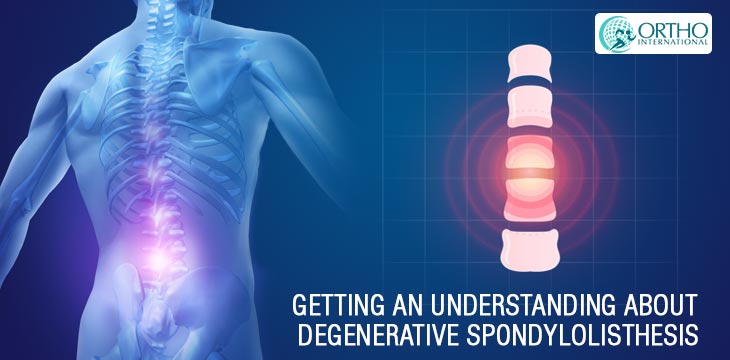Spondylolisthesis is an ailment where one vertebra has shifted forward over another one below it. This misalignment especially happens as a result of high-level degenerative disc disease (DDD), stress breakages, or natural abnormalities, and in rare instances from a tumor or trauma. Degenerative spondylolisthesis is a result of the aging process in which the bones, joints, and ligaments in the spine grow vulnerable and become less able to manage the adjustment of the spinal column. This type of spondylolisthesis most usually happens at the L4-L5 levels of the lumbar spine, but it can also happen at other levels.
Degenerative spondylolisthesis is more prevalent in people over age 50, and in selective, among people over age 65. Women are two-to-three times as expected as men to be diagnosed. Spondylolisthesis can create impingement of the tissues or exhaustion of the back muscles and may end in the lower back or leg pain.
Prevalent Indications Of Degenerative Spondylolisthesis
Some prevalent conditions include lower back or leg pain, sciatica, aching discomfort in the hip, buttocks, and lower back that radiates (spreads) into the back of the thigh and leg, a shuffling walk when exercising weakness in the lower limbs, unusual posture.
Analyzing Degenerative Spondylolisthesis
The doctor generally performs a physical review to recognize regions of pain and vulnerability and will assess the balance and the overall progress of the spine. In most of the instances, the doctor also collects information about the records of the signs, including medication you have exercised for the disorder. After analysis, the doctor may practice tests to further authenticate his or her judgment. The test which is generally recommended include x-ray, CT (computed tomography) scan, and MRI (magnetic resonance imaging). Collectively, all of these methods may help to confirm a determination of spondylolisthesis.
Treatment Alternative
The following gives a summary of standard non-surgical and surgical procedures for spondylolisthesis.
Non-Surgical Treatment
If spondylolisthesis is confirmed as an examination, the doctor will likely prescribe one or more of the following procedures i.e. physical therapy and empowering exercises, rest and a limitation of physical activity, injections such as corticosteroids to which help in reducing the discomfort and inflammation. In many cases medicines and analgesics to lessen pain and inflammation. Typical remedies involve non-steroidal anti-inflammatory drugs (NSAIDs).
Surgical Treatment
When surgical treatment is decided as the best way of action, spinal rehabilitation surgery is performed to lessen movement between the vertebrae, fitting alignment, and repair disc elevation and normal lumbar curve. Throughout the procedure, the surgeon eliminates most of the disc separating the two bones that are to be preserved and implants a spacer to reestablish correct spinal alignment.
The doctor may also employ bone grafting materials that connect the area within the vertebrae and restore the bones to develop together. Raised stability and restoration of disc height and alignment usually end in notable pain release. The surgical procedures used to treat degenerative spondylolisthesis include two main methods.
The Maximum Access Surgery Posterior Lumbar Interbody Fusion, Posterior lumbar interbody fusion (PLIF) which is a simple surgical procedure that strives to eradicate weakness in the back and discomfort in the lower back and lower limbs. The MAS TLIF method is a way that strives to eliminate weakness in the back through a less invasive strategy to fuse one or more vertebrae collectively to lessen motion.
Another method is the Extreme Lateral Interbody Fusion system which is a minimally disruptive surgical procedure done through the rear of the body. It is intended to manage a series of spinal ailments. Using registered nerve monitoring technology, the surgeon obtains lateral admittance to the spinal column, serving to avoid any major issues in the area between the incision and the spine.
Reference
Degenerative spondylolisthesis is growing day be day because of our changing lifestyle and eating habits and needs special care attention. To get the best treatment for such ailment try meeting Dr. Abhishek Mishra, the best orthopedic doctor in Delhi.
